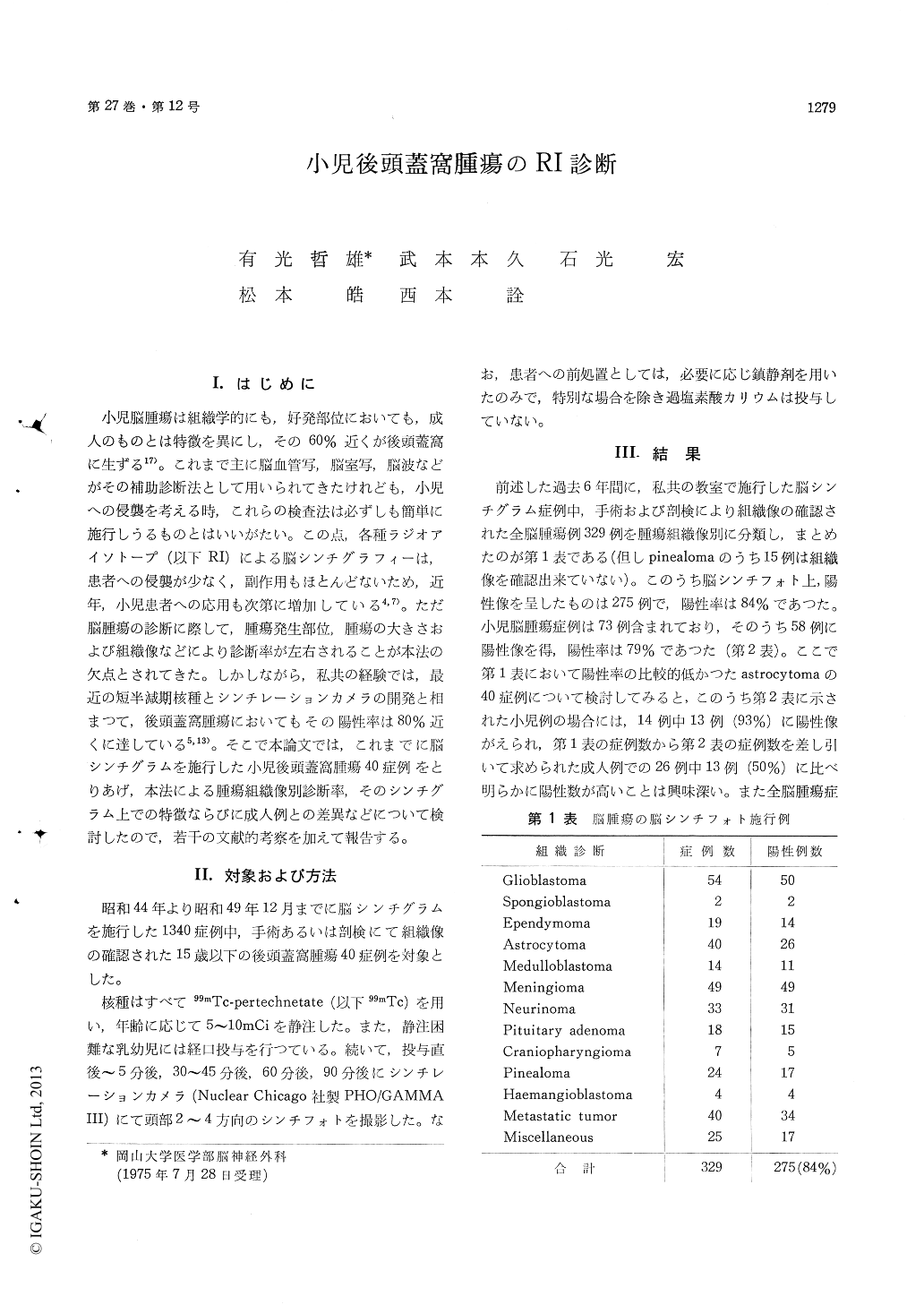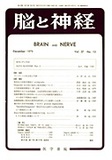Japanese
English
- 有料閲覧
- Abstract 文献概要
- 1ページ目 Look Inside
I.はじめに
小児脳腫瘍は組織学的にも,好発部位においても,成人のものとは特徴を異にし,その60%近くが後頭蓋窩に生ずる17)。これまで主に脳血管写,脳室写,脳波などがその補助診断法として用いられてきたけれども,小児への侵襲を考える時,これらの検査法は必ずしも簡単に施行しうるものとはいいがたい。この点,各種ラジオアイソトープ(以下RI)による脳シンチグラフィーは,患者への侵襲が少なく,副作用もほとんどないため,近年,小児患者への応用も次第に増加している4,7)。ただ脳腫瘍の診断に際して,腫瘍発生部位腫瘍の大きさおよび組織像などにより診断率が左右されることが本法の欠点とされてきた。しかしながら,私共の経験では,最近の短半減期核種とシンチレーションカメラの開発と相まつて,後頭蓋窩腫瘍においてもその陽性率は80%近くに達している5,13)。そこで本論文では,これまでに脳シンチグラムを施行した小児後頭蓋窩腫瘍40症例をとりあげ,本法による腫瘍組織像別診断率,そのシンチグラム上での特徴ならびに成人例との差異などについて検討したので,若干の文献的考察を加えて報告する。
In our clinic, 1340 cases underwent the sequentialbrain scintigraphy with Tc-99m-pertechnetate andscintillation camera. Intracranial tumors were con-firmed histologically in 329 cases and the locationsite of the tumor was diagnosed by scintigraphy in274 (85%) out of them. There were 40 cases ofposterior fossa tumor in children and 33 cases (83%)had positive results. The present study describesthe clinical usefulness of brain scintigraphy to thediagnosis of posterior fossa tumor in children.
Our diagnostic accuracy (83%) in posterior fossatumors of children was as high as that of supra-tentorial tumors or that of adult cases. Astro-cytomas, medulloblastomas and ependymomas, whichform two-thirds of posterior fossa tumors in child-ren, showed a high rate of positive results. Parti-ularly in these tumors, it is very important forneurosurgeons to differentiate astrocytoma frommedulloblastoma before craniotomy, because themedical treatment and the prognosis are quitedifferent.
In the cases of astrocytoma, 9 out to 10 tumorswere localized on scintigram and their uptakes ofradioisotopes increased with time, in another wordsthe abnormal uptake was most clearly seen at 90minutes after the injection of radioisotope. Inmedulloblastoma, 10 of 12 cases had positive resultsand their uptake almost did not change with time.
In ependymoma, 3 of 4 cases were positively di-agnosed and the highest uptake at 5 minutes afterinjection, was followed by gradual decrease withtime. Accordingly, we have correctly diagnosedtheir histological nature in 14 (67%) of 21 casesof these three kinds of tumors retrospectively onlyfrom the brain scintigram.
It might be concluded that sequential brainscintigraphy is clinically valuable as a screeningtest for the children of brain tumor, suspect evenfor the cases of posterior fossa tumor, and is perhapsuseful as a method for the differentiation of astro-cytoma from medulloblastoma.

Copyright © 1975, Igaku-Shoin Ltd. All rights reserved.


